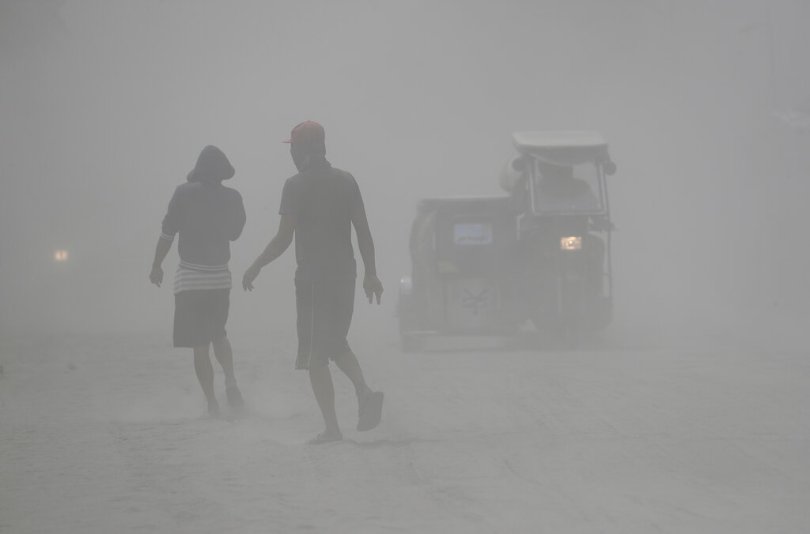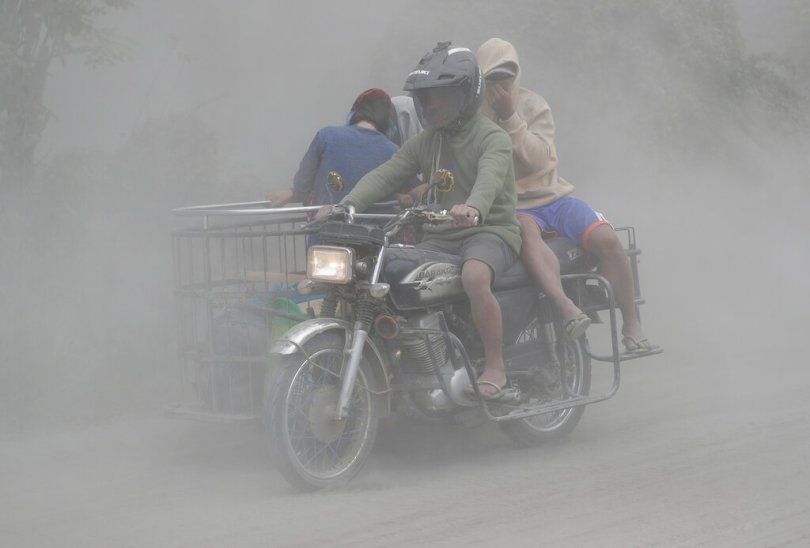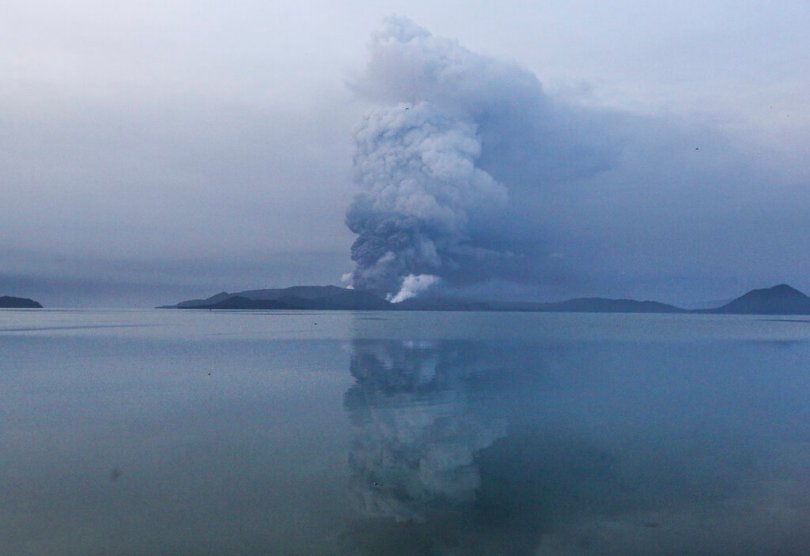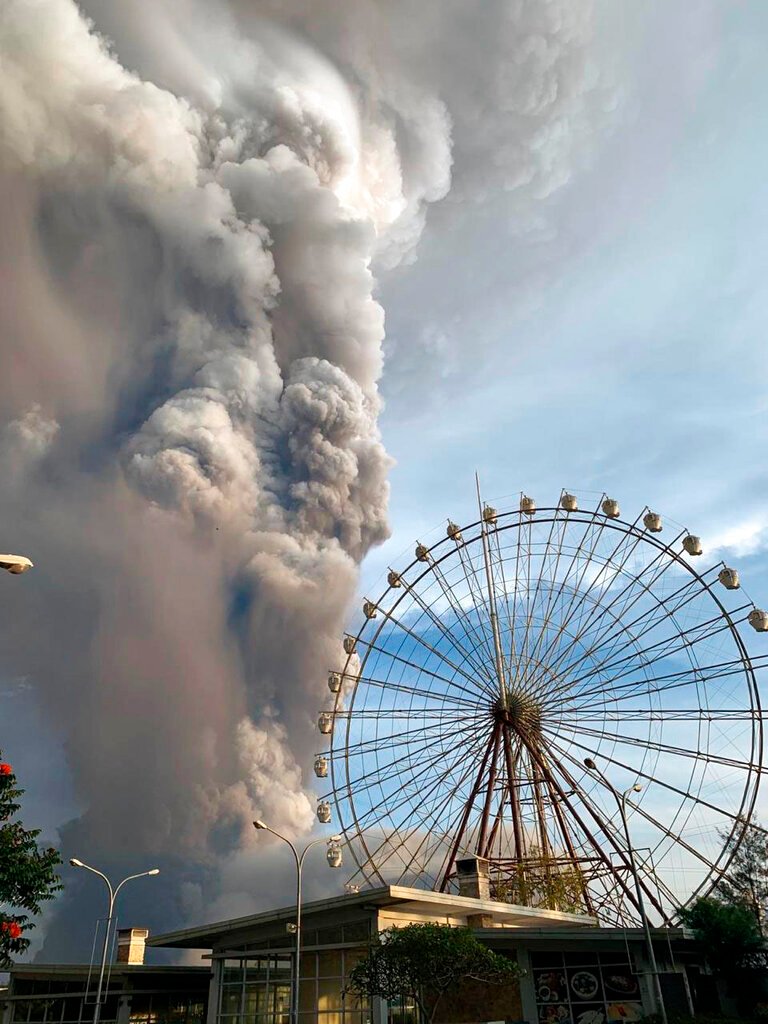TAGAYTAY, Philippines — Red-hot lava spewed from a volcano near the Philippine capital of Manila on Monday as tens of thousands of people fled through heavy ash and frightening tremors, and authorities made plans to evacuate hundreds of thousands more for fear of a bigger eruption.
Watch Video
Clouds of ash from the Taal volcano reached Manila, 65 kilometers (40 miles) to the north, on Sunday, forcing the shutdown of the country’s main airport, with more than 500 flights canceled. The airport partially reopened Monday after the ashfall eased.










There were no immediate reports of any deaths or major damage directly blamed on the eruption. A truck, however, skidded out of control on an ash-blanketed road, killing the driver and injuring three companions in Laguna province in an accident police said may have been linked to slippery conditions.
The government’s disaster-response agency and other officials reported more than 30,000 villagers fled their homes in the hard-hit province of Batangas and nearby Cavite province. Officials expected the number to swell.
Some residents could not immediately flee their ash-blanketed villages because of a lack of transportation and poor visibility. Others refused to leave their homes and farms.
“We have a problem — our people are panicking due to the volcano because they want to save their livelihood, their pigs and herds of cows,” Mayor Wilson Maralit of the town of Balete told DZMM radio. “We’re trying to stop them from returning and warning that the volcano can explode again any time and hit them.”
Maralit, whose town lies along the shoreline of Taal Lake, which surrounds the erupting volcano, appealed for troops and more police to stop people from sneaking back to their villages.
After a cleanup and a shift of ash-laden winds away from Manila, officials partially reopened the main airport and allowed planes to take off. President Rodrigo Duterte’s aircraft was able to land in Manila on Monday from his hometown of Davao, his spokesman said, adding he saw the extent of the disaster from the plane.
Taal suddenly rumbled back to life on Sunday, blasting steam, ash and pebbles up to 10 to 15 kilometers (6 to 9 miles) into the sky, according to the Philippine Institute of Volcanology and Seismology.
On Monday, the ash and steam column reached a height of 2 kilometers (about a mile), with lava fountains spurting less than half of that height before falling into the lake waters surrounding the main crater. Lava also spurted from another vent north of the main crater, said Renato Solidum, who heads the institute.
Frequent tremors and a buildup of pressure of the 1,020-foot (311-meter) volcano, one of the world’s smallest, however, indicated a major and much more dangerous eruption could still happen, he said.
The government volcano-monitoring agency raised the danger level around Taal three notches on Sunday to Level 4, indicating a hazardous eruption within hours to days was possible. Level 5, the highest, means such an eruption is underway.
The volcano’s last disastrous eruption happened in 1965, when more than 200 people were killed.
Irene de Claro, a mother of four, worried about her father, who stayed behind in their village in Agoncillo while the rest of the family fled.
“My father is missing. We don’t know, too, what happened to our house because the ash was up to our knees, it was very dark and the ground was constantly shaking when we left,” de Castro said at a school in the town of Lemery. “Most likely there’s nothing for us to return to. We’re back to zero.”
The small island where the volcano lies has long been designated a “permanent danger zone,” though fishing villages have existed there for years. Those residents were all evacuated, volcanology officials said, adding that there should be a total evacuation, too, of endangered communities within a 14-kilometer (8.7-mile) radius of Taal,
Government work was suspended and schools closed in a wide swath of towns and cities, including Manila, because of the health risks from the ash.
Taal is regarded as the second-most restive of about two dozen active volcanoes in the Philippines, which lies along the Pacific “Ring of Fire,” a region prone to earthquakes and volcanic eruptions. A long-dormant volcano, Mount Pinatubo, blew its top north of Manila in 1991 in one of the biggest volcanic eruptions of the 20th century, killing hundreds of people.
About 20 typhoons and other major storms each year also batter the Philippines, making it one of the world’s most disaster-prone countries.
Gomez reported from Manila. Associated Press journalists Kiko Rosario in Manila and Aaron Favila in Tagaytay contributed to this report.
Associated Press

Putting a spotlight on business, inventions, leadership, influencers, women, technology, and lifestyle. We inspire, educate, celebrate success and reward resilience.














